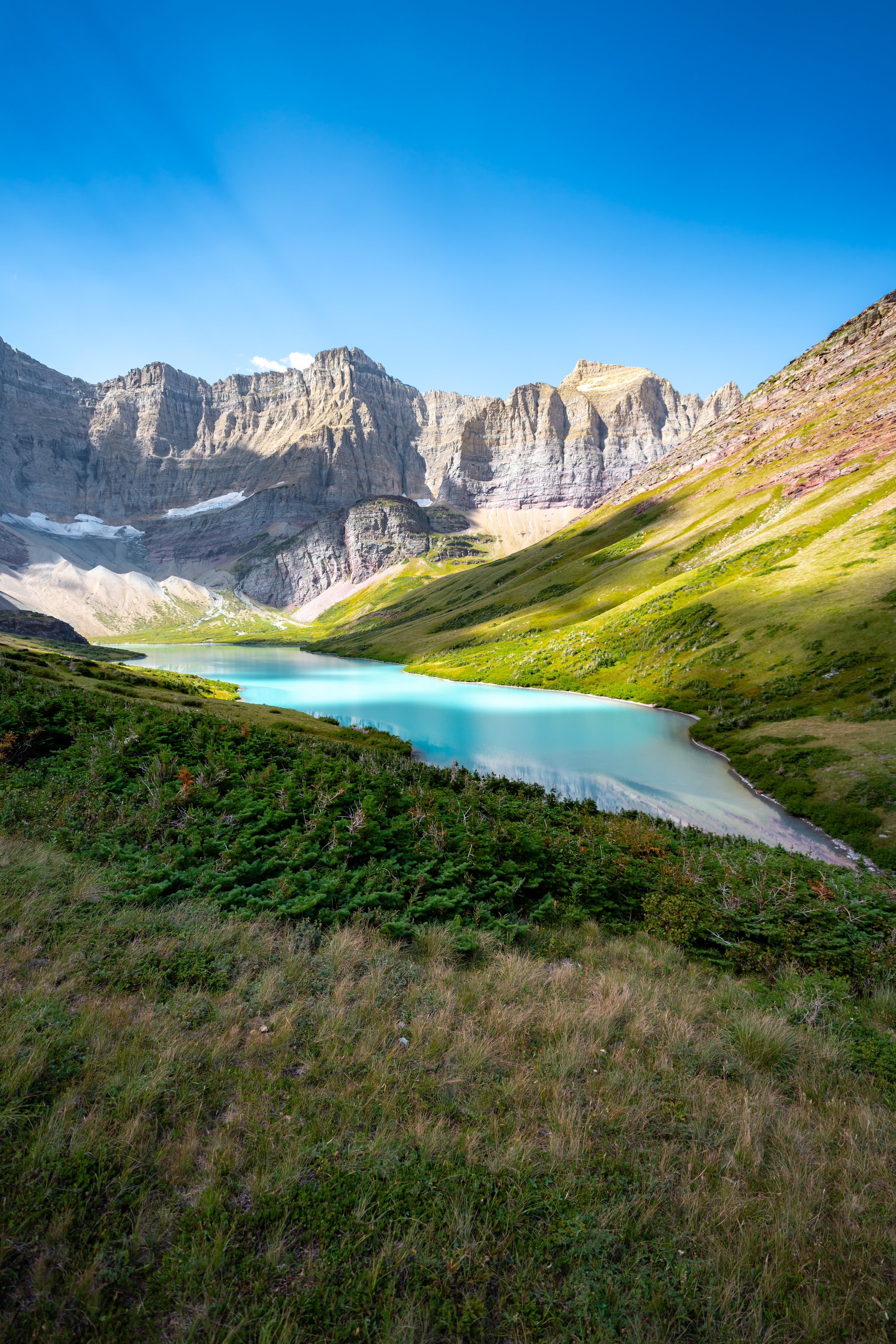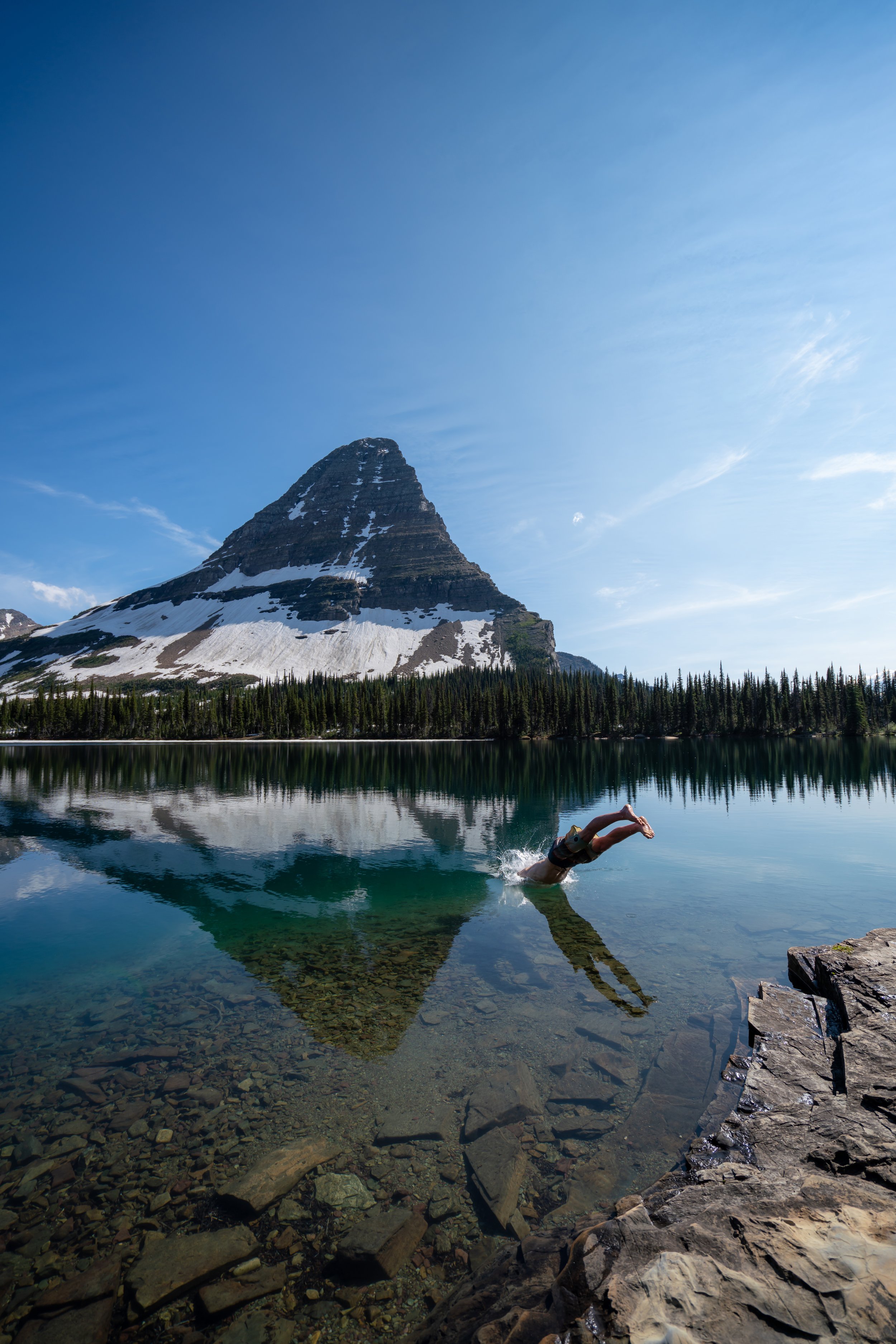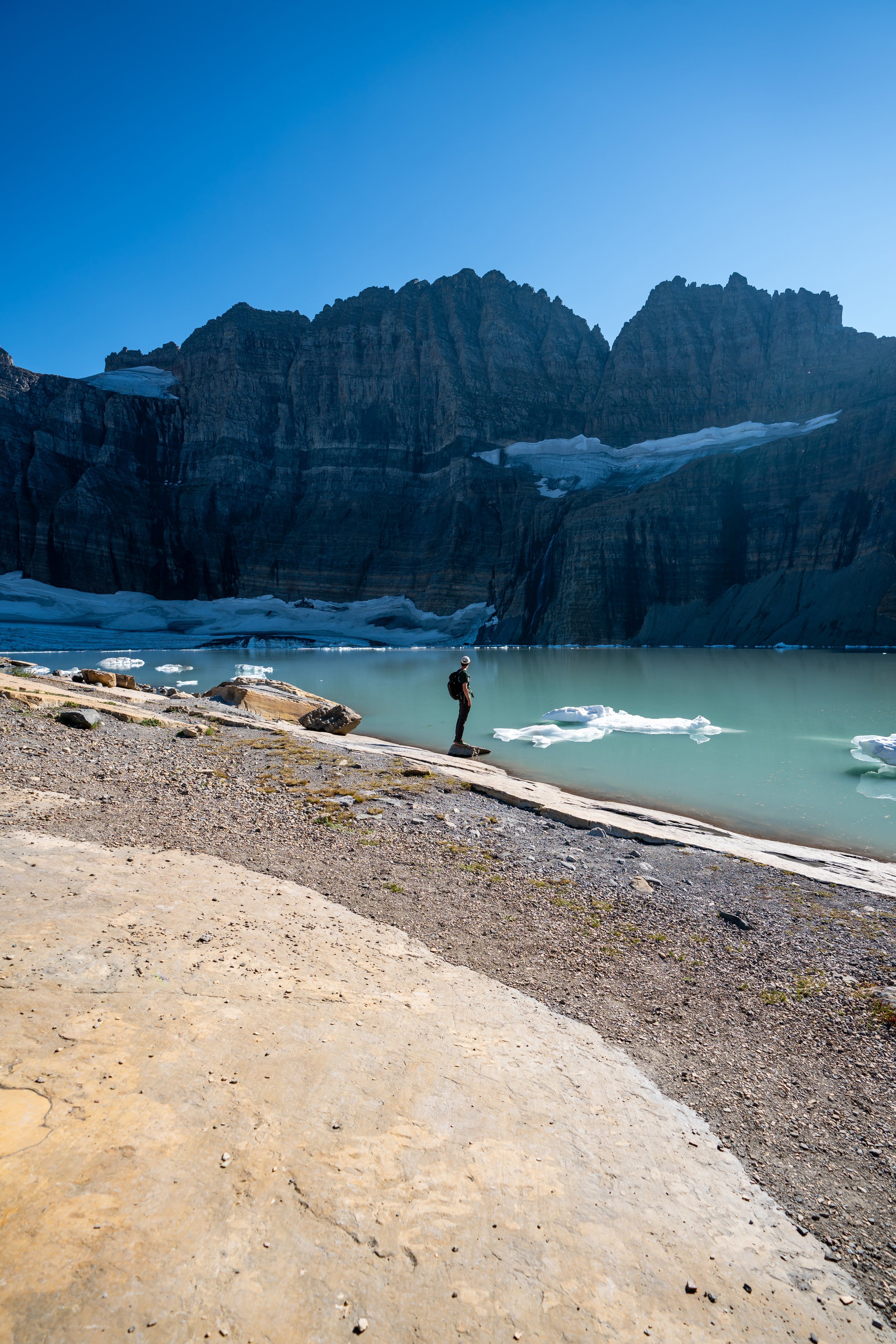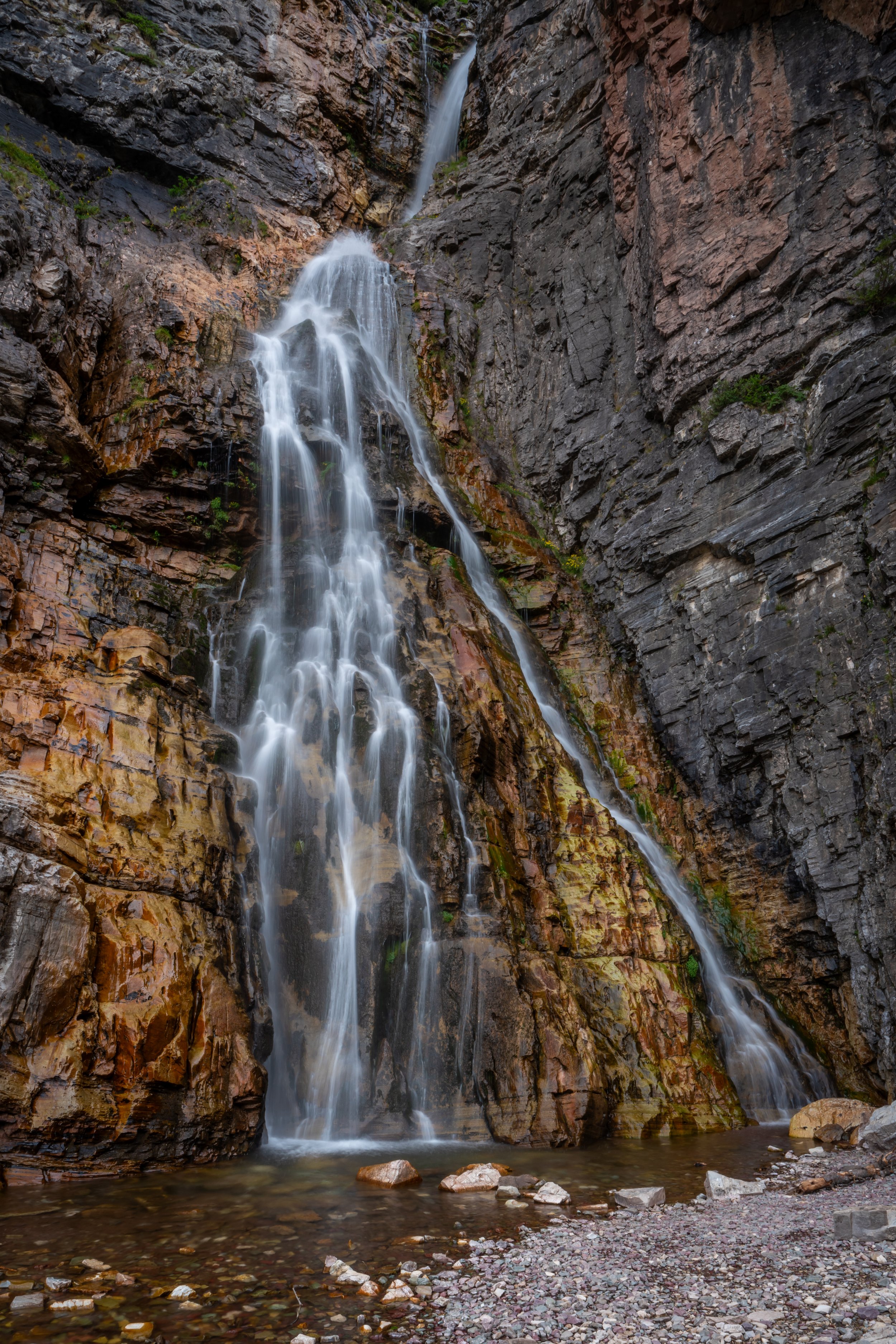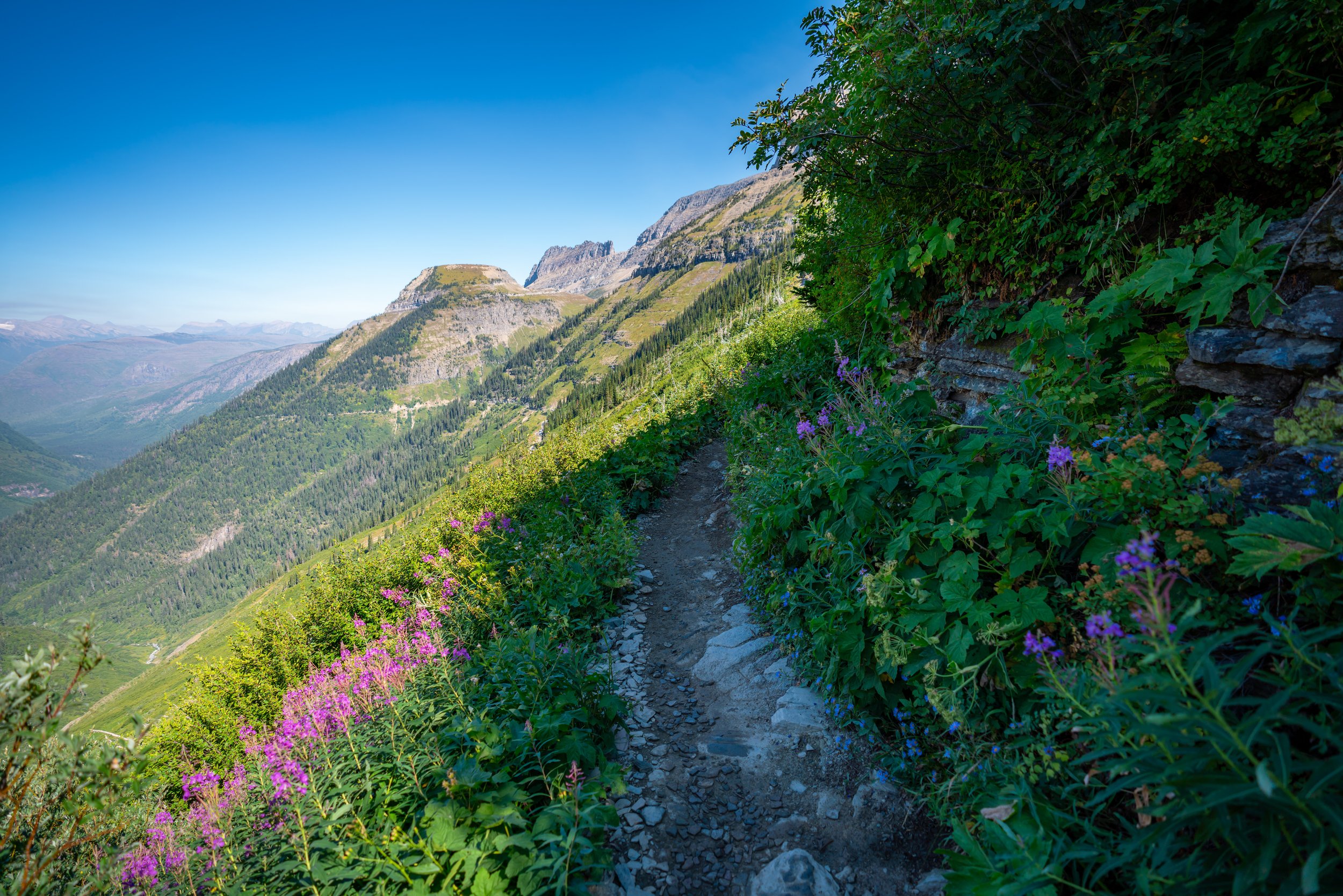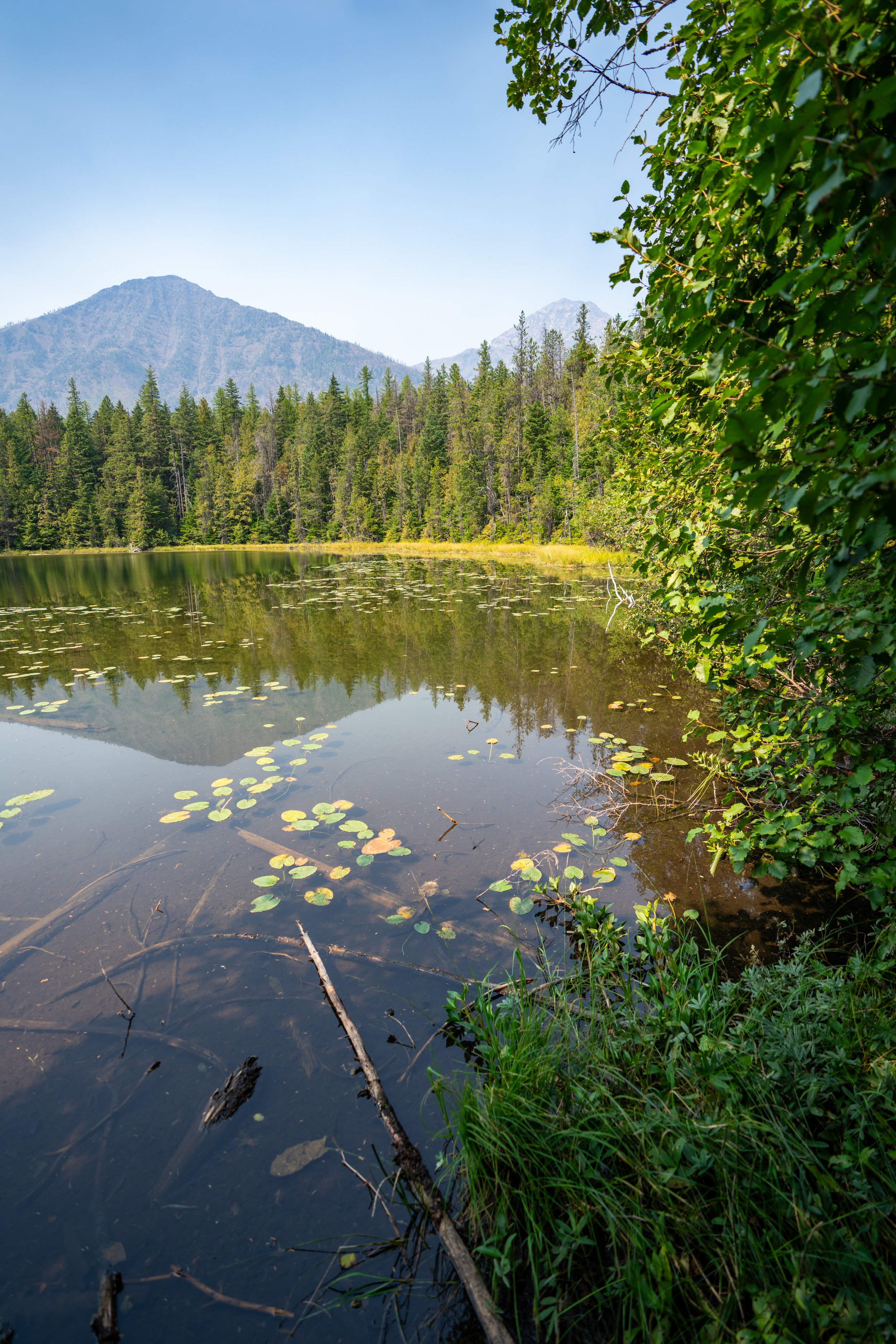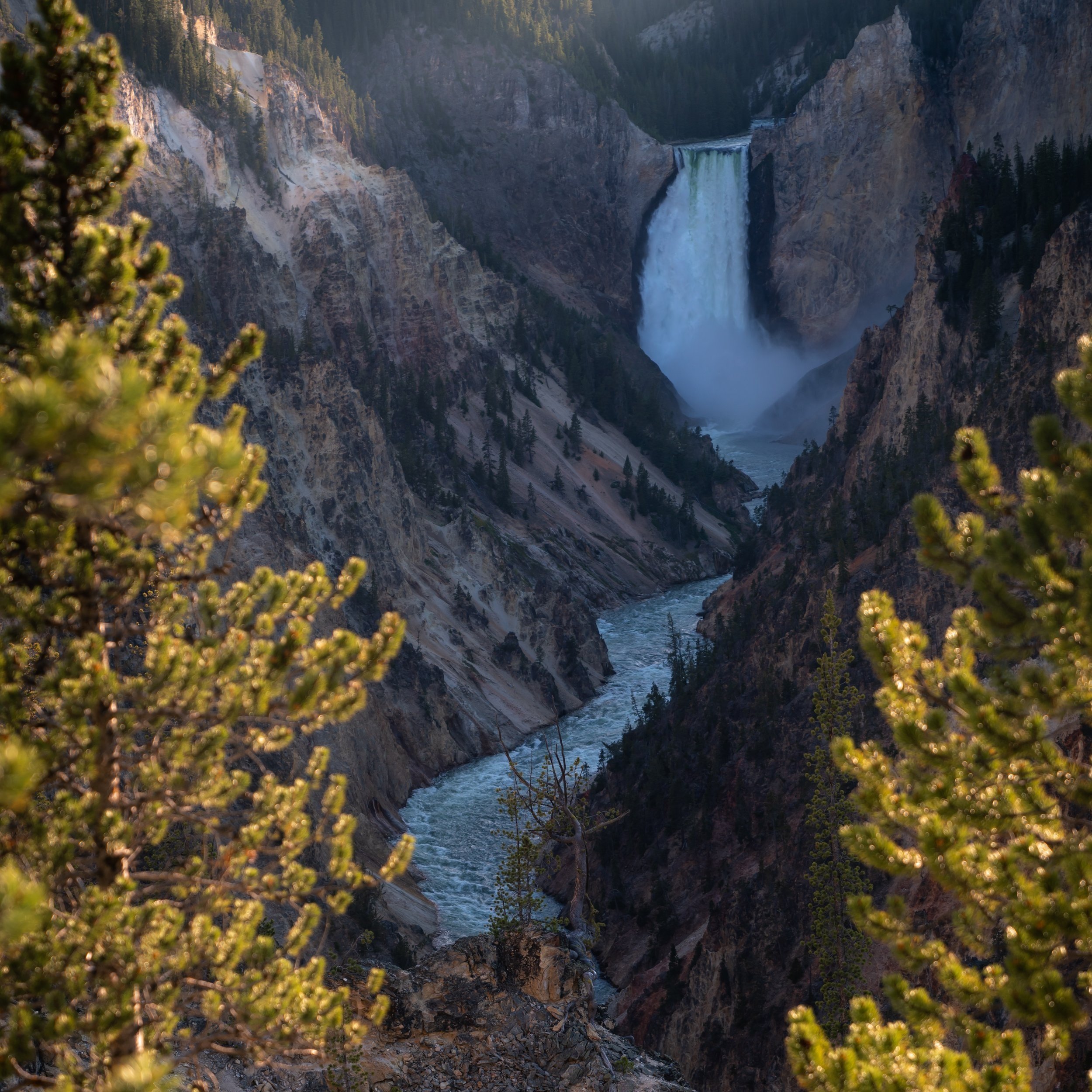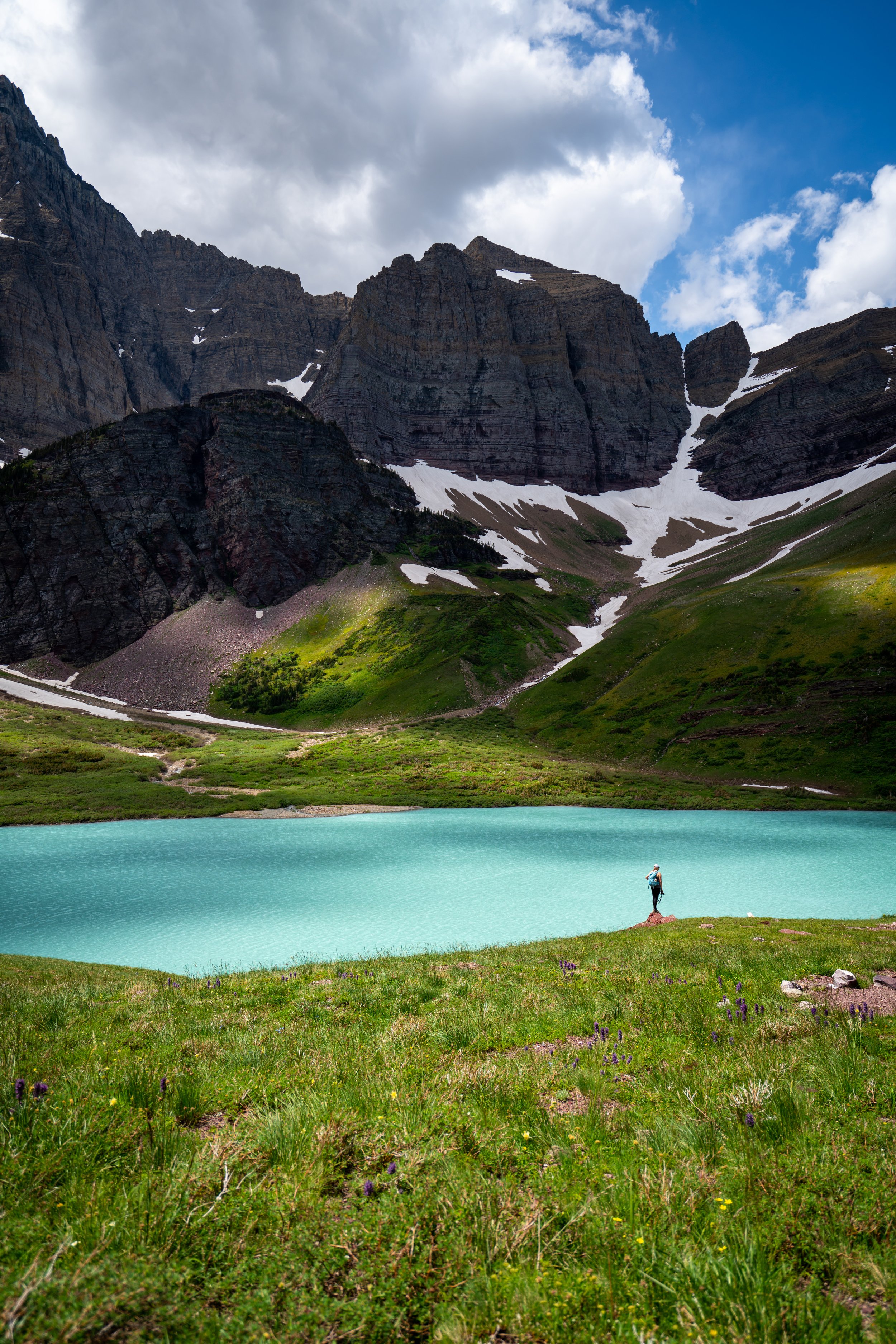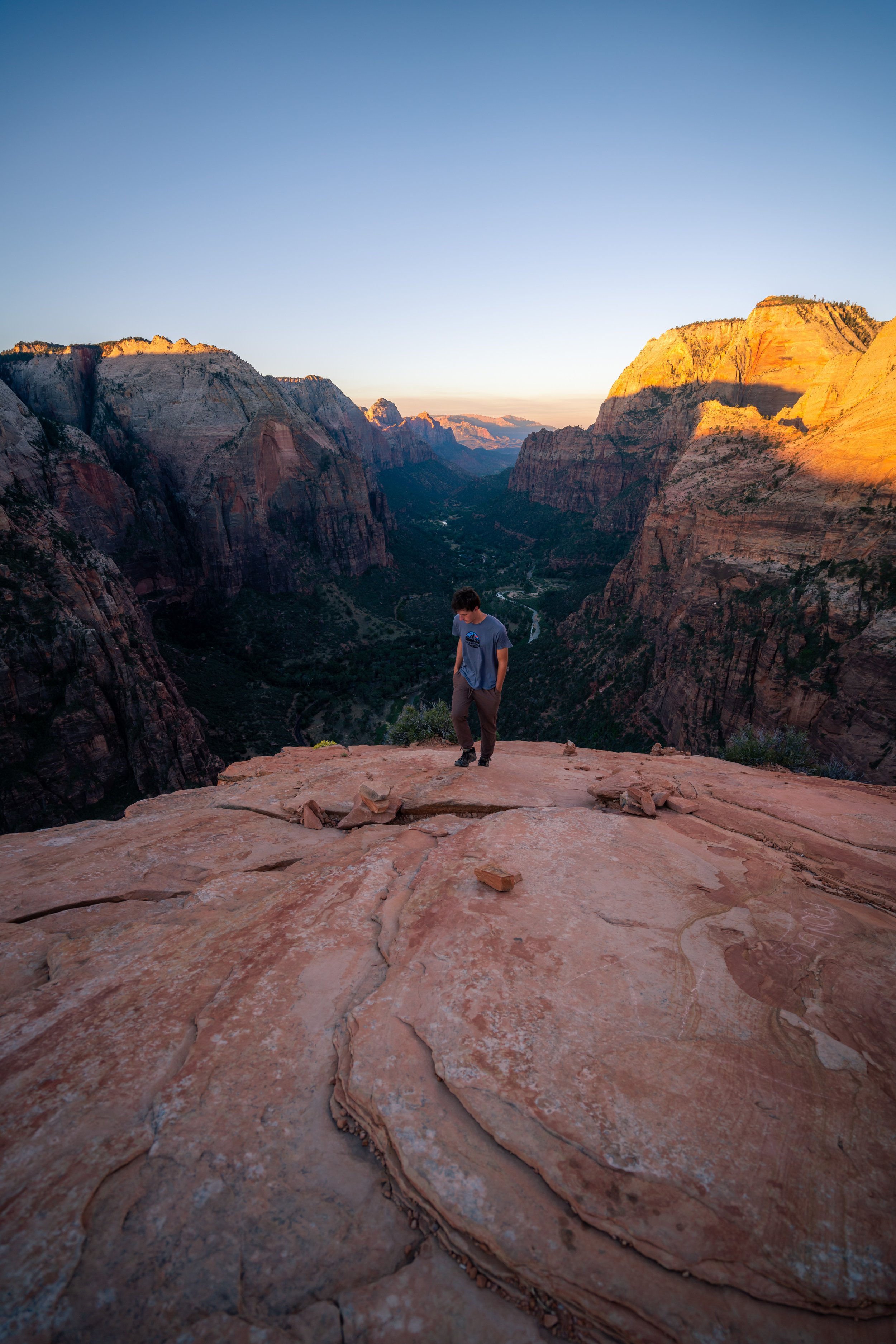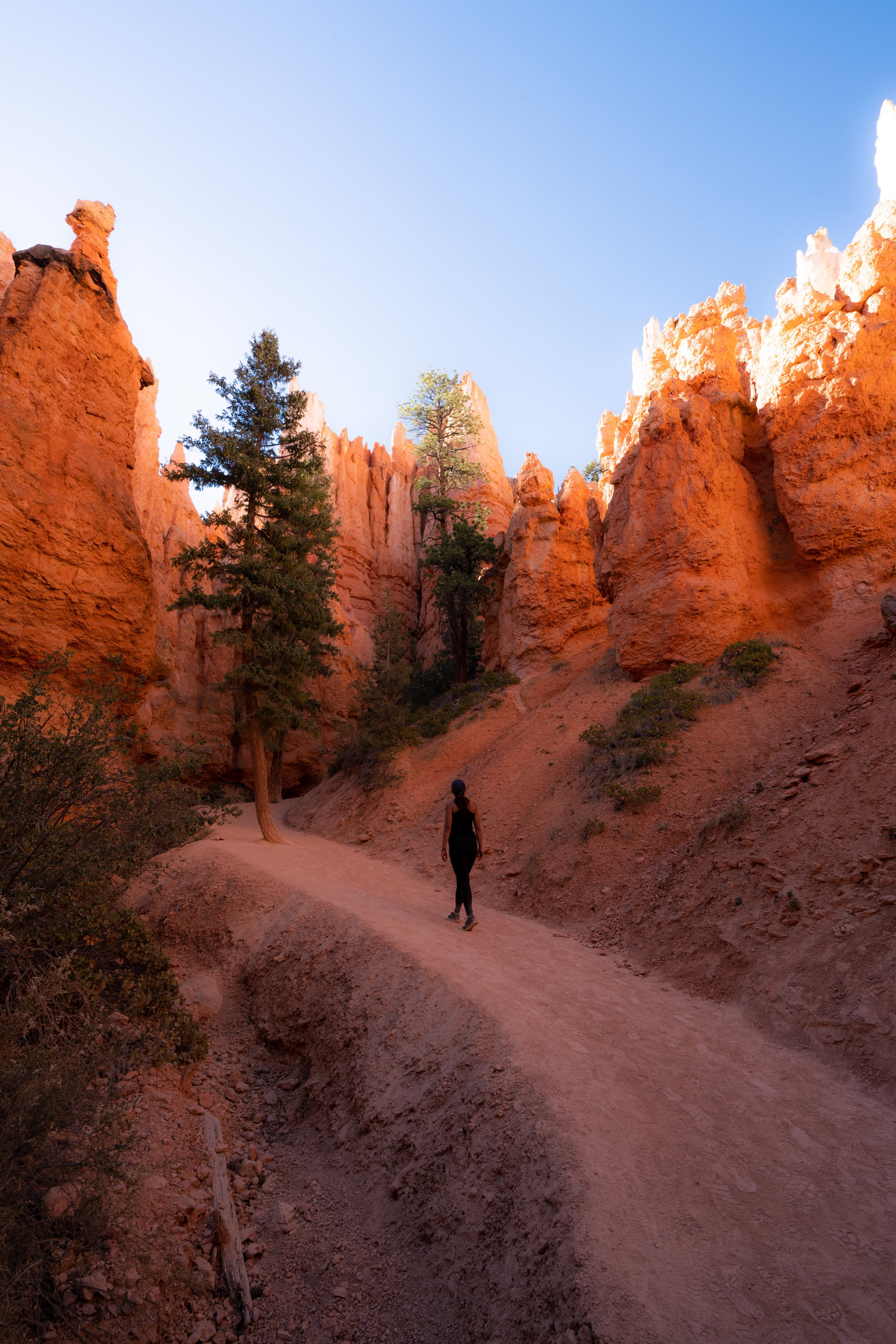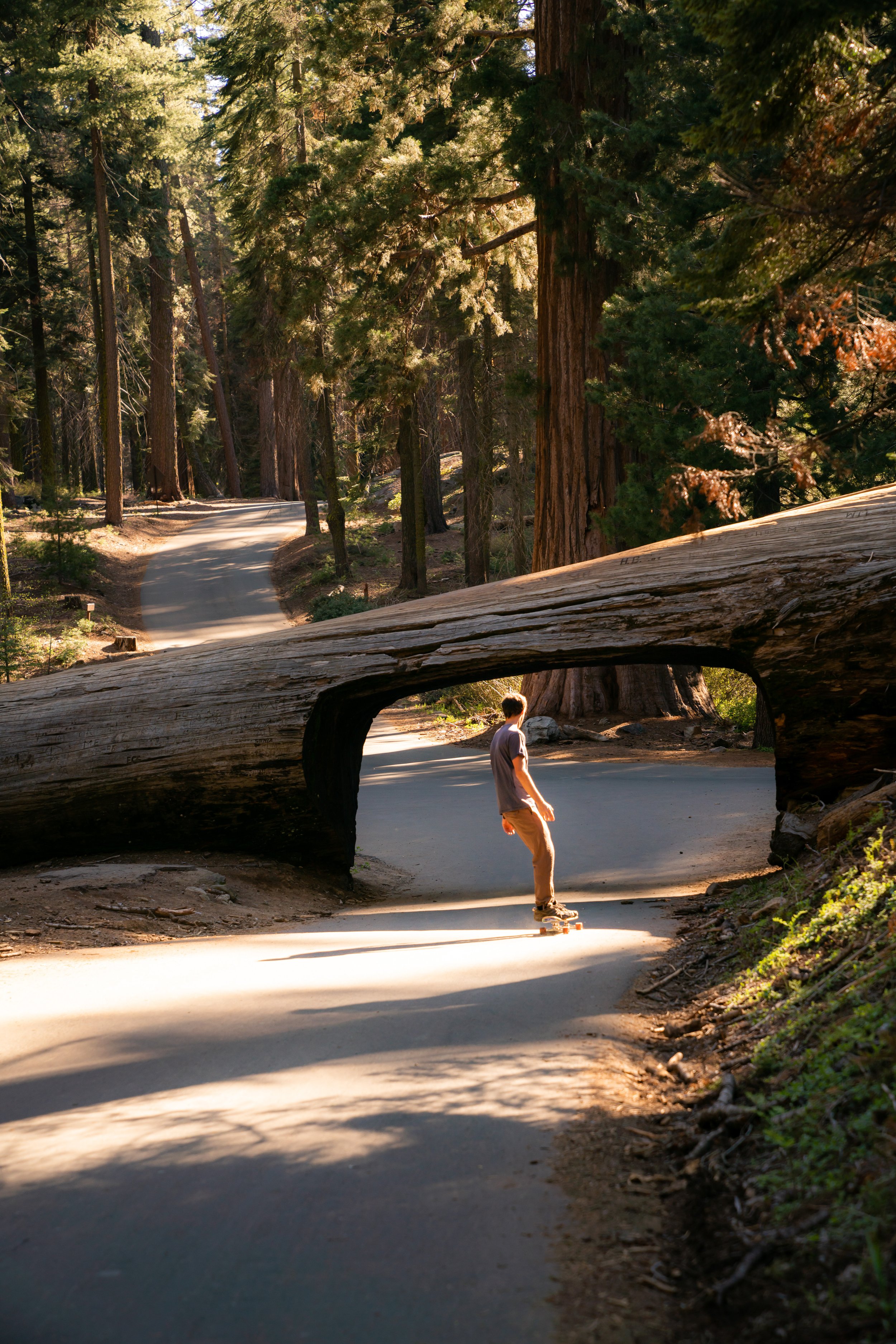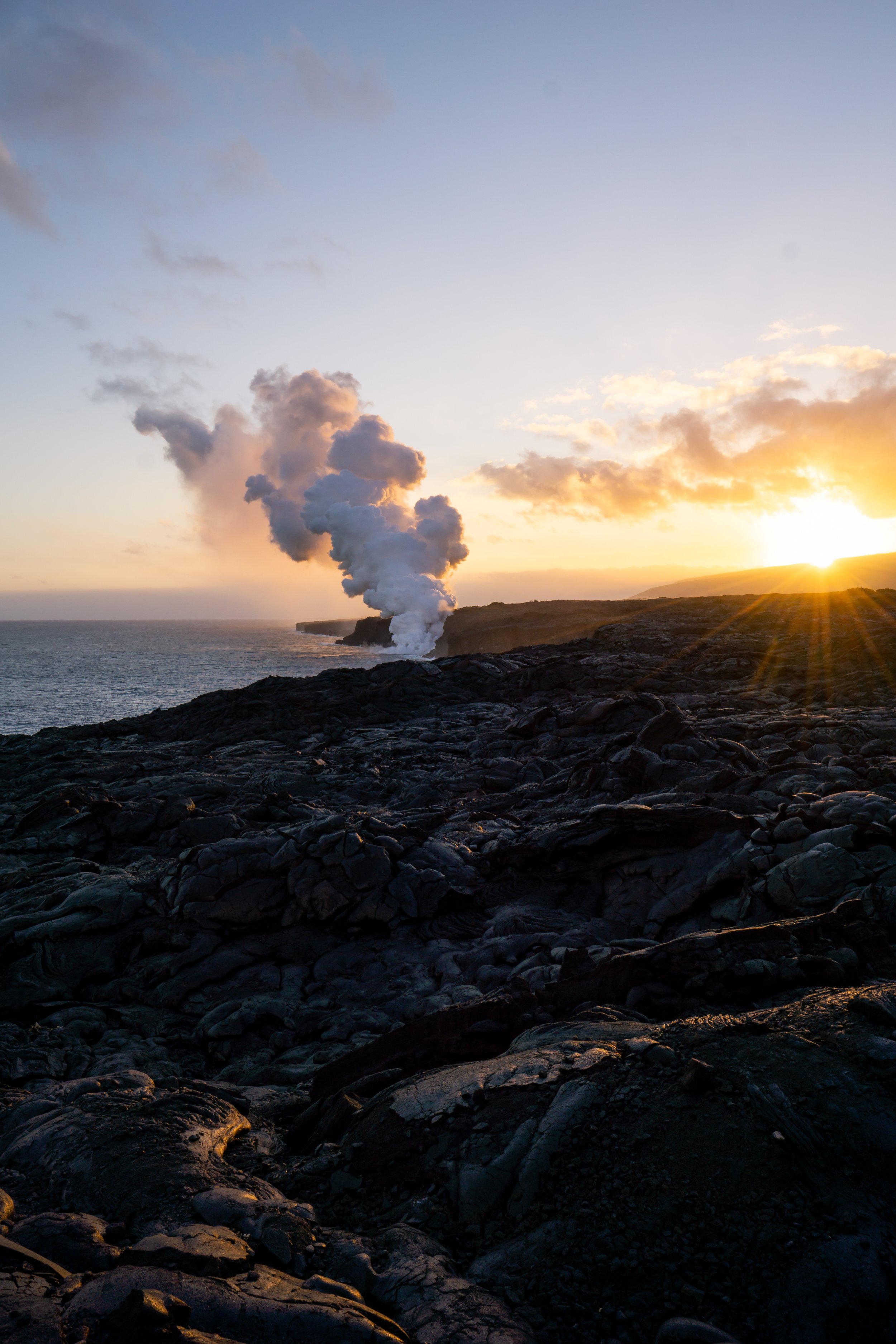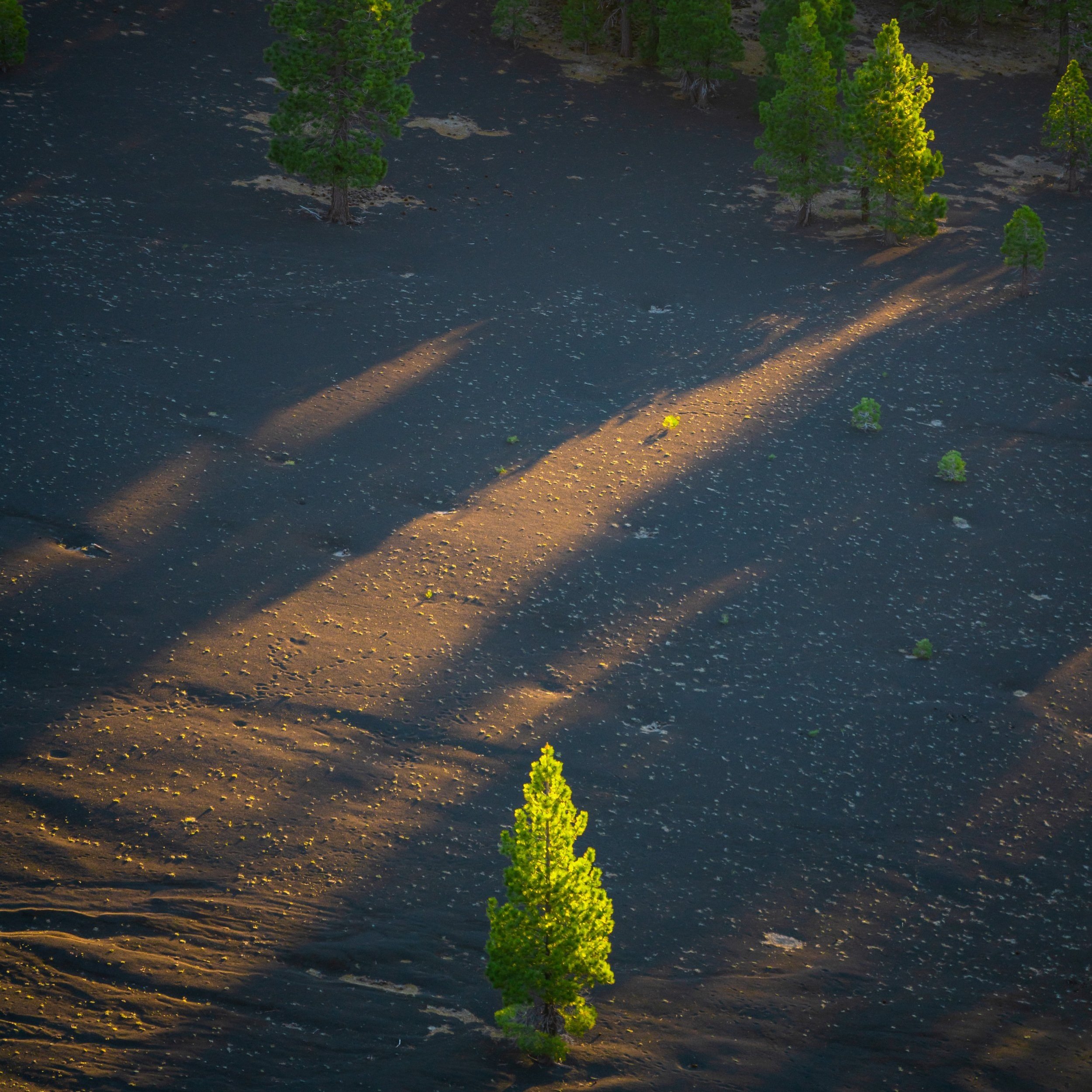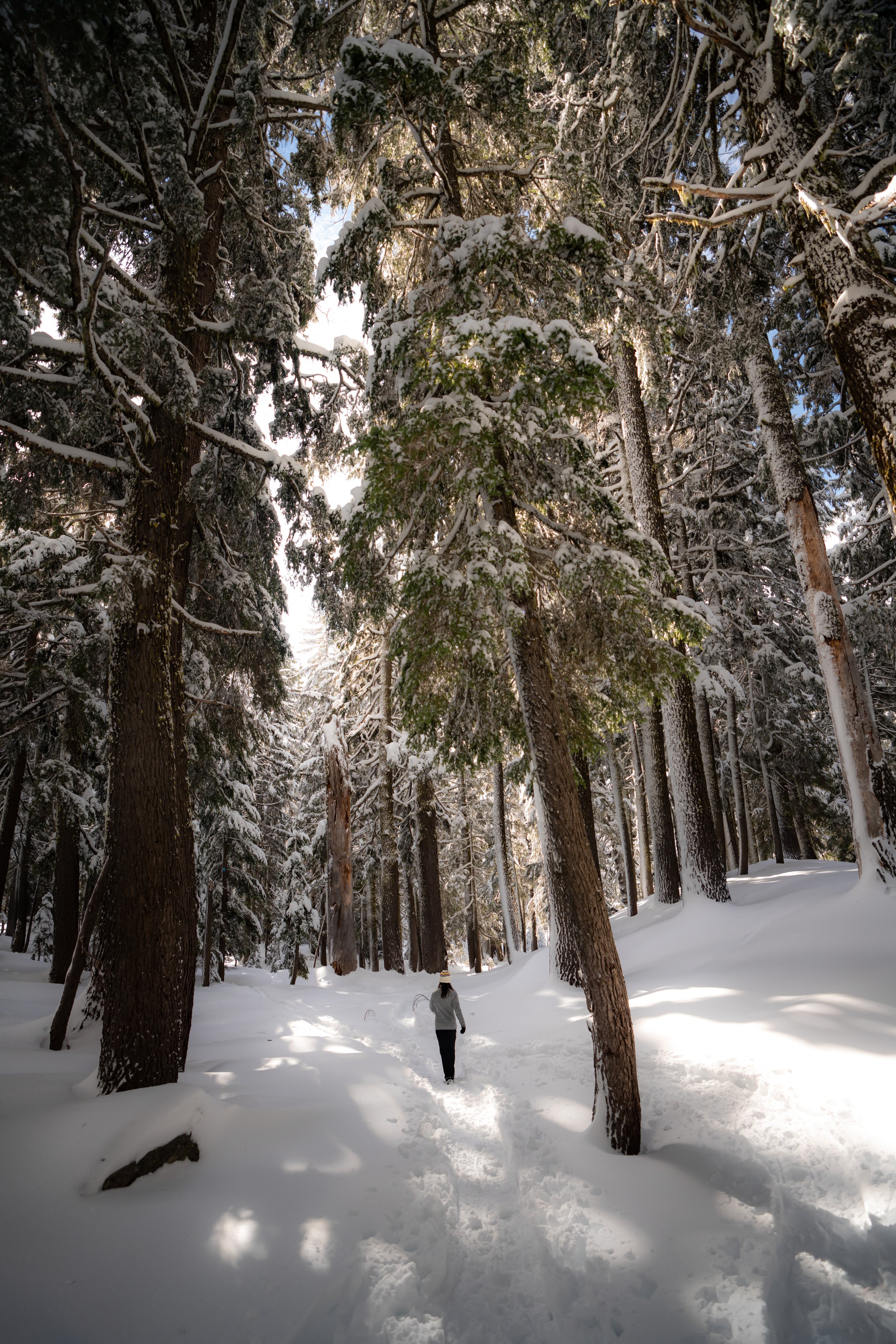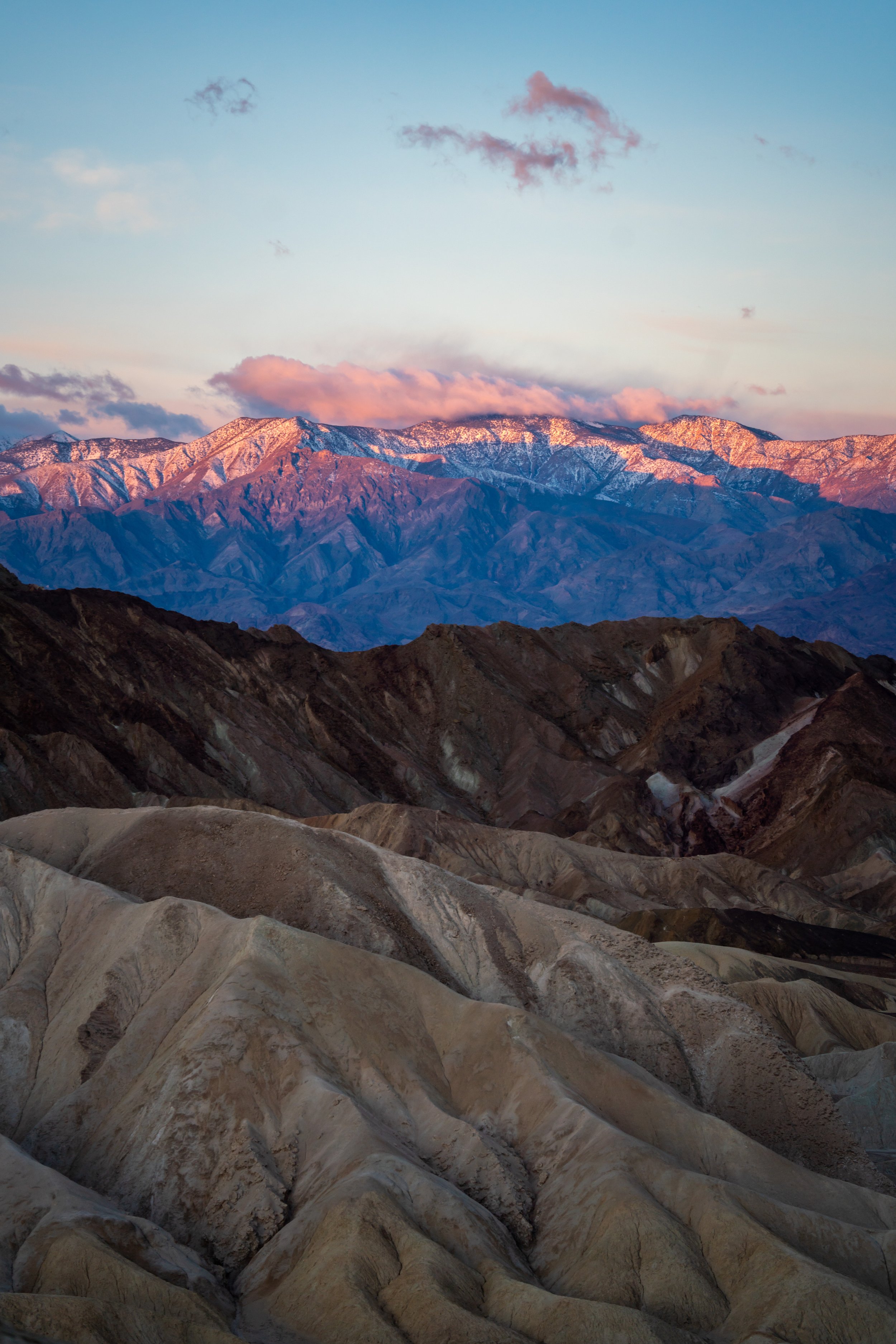Hiking the Avalanche Lake Trail in Glacier National Park
Distance: 4.8 miles / 7.7 km
The Avalanche Lake Trail in Glacier National Park is a beautiful and relatively easy day hike on the west side of Going-to-the-Sun Road that leads to a breathtaking glacial-carved alpine basin, surrounded by towering cliffs and cascading waterfalls!
For these reasons, the Avalanche Lake Trail is inevitably one of the park’s most popular trails compared to other, more challenging alpine lake adventures, like Cracker Lake and Iceberg Lake out of Many Glacier.
For this reason, I highly recommend starting early in the morning to avoid the crowds, which is without a doubt the best way to see and spend some time at Avalanche Lake before exploring elsewhere in the park.
Avalanche Lake Trailhead Parking
Parking for the Avalanche Lake Trail is located at the joint trailhead with the Trail of the Cedars.
That being said, parking here, like many other trailheads throughout Glacier, is extremely competitive on nearly every nice day during the busy summer season. For this reason, I recommend arriving early, which is also one of the better ways to enjoy Avalanche Lake without the crowds.
Google Maps Directions: Avalanche Lake Trailhead
Hiking Checklist - Glacier
Here is a complete list of must-have things that you will want for any hike in Glacier National Park.
Bear Spray & Holster - If you aren’t flying, don’t rent bear spray! It’s a waste of money. Prepare ahead of time by buying your own, as this may be one of the most important items on this list.
Osprey 3L Water Bladder - The Osprey 3L water bladder is the most universal hiking and backpacking water bladder on the market, and it’s my go-to because of the slide-off seal that allows it to be quickly filled from the top. Additionally, individual parts are easily replaceable, such as the bite valve.
Black Diamond Headlamp - Personally, I recommend the Black Diamond Storm because it is one of the brightest, lightest, and longest-lasting headlamps on the market—and trust me, the weight-to-battery-life ratio really does matter!
Hiking / Trail Running Shoes - Depending on the type of trail, I prefer to use either the Keen Targhee for longer, more rugged hiking or the HOKA Zinal Trail-Running Shoe for lighter, less intense trails. In either case, both have been amazing to me for many years across countless environments, and both can be found in men’s and women’s sizes. - (Men’s Keen / Women’s Keen) (Men’s HOKA / Women’s HOKA)
Blister / Heel Protectors - I swear by these cheap, amazing heel protectors to prevent blisters for nearly every kind of hiking and backpacking that I do!
Waterproof Rain Shell - You never know when it may rain, and I’ve learned over the years that a rain shell is far better than a rain jacket. By this, I mean that it’s best to have something that the water will roll right off of, which is why I recommend the Patagonia Torrentshell 3L available in both men’s and women’s sizes.
High SPF Sunscreen - Packing high-SPF sunscreen is a must for long days outside!
Hiking the Avalanche Lake Trail
For the first 0.4 miles (0.6 km), the Avalanche Lake Trail follows the Trail of the Cedars until the back of the loop, near the second bridge crossing over Avalanche Creek.
Trail of the Cedars
This is the split for the Trail of the Cedars loop.
Overall, it makes no difference which direction you choose to hike the loop in order to reach the Avalanche Lake junction, as the trail going straight over Avalanche Creek is only 0.1 miles (0.2 km) longer.
The photos below is the trail on the right side of the loop.
Along the right side, the Trail of the Cedars parallels the Avalanche Campground.
Avalanche Lake-Trail of the Cedars Junction
At the back of the loop, the Avalanche Lake Trail branches off from the Trail of the Cedars.
This is also where the trail will noticeably start gaining elevation, but overall, the elevation gain is fairly mild.
Avalanche Lake-Lake McDonald Lodge Junction
Then, immediately after the Avalanche Lake junction shown above, the trail splits again with the trail that heads south toward the Lake McDonald Lodge.
Go left to continue hiking toward Avalanche Lake.
After the two junctions above, the Avalanche Lake Trail simply follows Avalanche Creek all the way to the lake.
From the Trail of the Cedars split to Avalanche Lake, the hike gains about 500 ft. (152 m) of elevation over the course of 1.6 miles (2.6 km), where the trail begins a gradual downhill to the water.
Over this distance, the elevation gain is not too strenuous compared to other popular hikes throughout the park, such as the Grinnell Glacier Trail.
At about the 1.4-mile (2.3 km) mark, you may notice another canyon off to the left that joins with Avalanche Creek.
To put things in perspective, the creek running down this canyon is Hidden Creek, which is exactly where Hidden Lake, up toward Logan Pass, drains down into Avalanche Creek.
As the trail nears Avalanche Lake, the trees will noticeably start to thin, which is a nice sign that you’re getting close!
Since Avalanche Lake is so popular, there is a pit toilet for all visitors just prior to the lake.
At the end of the trail, you can explore as much or as little of Avalanche Lake as you’d like.
The 4.8-mile (7.7 km) or 2.4-mile (3.9 km) one-way distance is only as far as the most typical stopping point along the shoreline of Avalanche Lake. However, if you choose to hike all the way to the back of Avalanche Basin, the distance will be a little more than 5.0 miles (8.0 km) overall.
Avalanche Lake
In my opinion, Avalanche Lake is one of the most picturesque alpine lakes in Glacier National Park!
While the lake is fairly shallow and only has a maximum depth of around 63 ft. (19 m), these conditions make for amazing landscape photography opportunities.
Additionally, if you're willing to explore the shoreline, there are better places to fish toward the back of the lake compared to the shallow shoreline where this photo was taken.
More Glacier Adventures
If you’re interested in reading about some more amazing adventures within Glacier National Park, check out my separate posts below!
Best Way to Find Places to Stay!
Wherever I travel, I love to start my search for places to stay on VRBO.
Even if I don’t end up booking through them, I think it’s one of the best ways to see what’s in the area!
Best Way to Book Rental Cars!
I travel quite a bit, and I know firsthand that finding a good rental car deal can be a challenge, but that’s why I recommend comparing all of your options with Discover Cars.
In short, Discover Cars is a well-known, reputable business that allows you to search for the best deal across companies, and they have the best full-refund cancellation policy I’ve ever seen, valid up to 72, or sometimes even 48, hours prior to your reservation!
Book Here: Discover Cars
Safety
Always be mindful that Glacier National Park and the surrounding area is Grizzly Bear country. Therefore, you need to be hiking with bear spray and know how to react in the event of a Black or Brizzly Bear encounter.
Aside from wildlife, Glacier National Park, like any area in the Mountain West, is known for its violent afternoon thunderstorms, which are more typical in the warmer summer months than other times of the year.
That said, it’s important to check the local forecast before setting off on any adventure, as lightning strikes are not uncommon in and near mountain ranges across the West. I have personally been knocked to the ground by a strike that hit near me in the past, and I confidently say that it’s an experience you don’t want to live through. This is why I highly recommend checking Mountain Forecast for any high-elevation adventures you may be interested in—especially when climbing a summit.
Finally, know that when micro-spikes are necessary for an early-season adventure, micro-spikes are never supposed to be a substitute for conditions that require crampons.
As always, find the most up-to-date information and conditions on the official National Park website.
National Park Service: Glacier National Park
U.S. National Parks Pass
Did you know that the same America the Beautiful Pass that grants access to all 63 U.S. National Parks can be purchased in advance at REI?
Yes, you can save time when you arrive by purchasing your National Park pass, along with your other outdoor gear, at REI before traveling to the park!
More U.S. National Parks
If you’d like to read more about some of my best recommendations when visiting other U.S. National Parks, check out some of my other posts below!
Disclaimer
All information provided on this blog is for informational purposes only and is not intended to be a substitute for information or advice from qualified professionals or managing agencies.
Noah Lang Photography LLC makes no representations or warranties regarding the accuracy or completeness of the information provided here, and readers should use their own discretion, judgement, and seek professional advice where it is appropriate.
Furthermore, Noah Lang Photography LLC shall not be held responsible for any injuries, lost individuals, or legal issues arising from the use of information provided on this website, and if applicable, the above safety disclaimer should be referenced to provide a generic overview of the risks involved.
All said, the content on this blog is for the sole use of Noah Lang Photography LLC, and unauthorized use or reproduction of this content is strictly prohibited.
Disclosure
This post is not sponsored.
However, some of the links in this post are affiliate links, which means that I may earn a small commission if a purchase is made through one of those links. This commission comes at no additional cost to you, and I only recommend products that I personally use and believe will add value to my readers. Thank you for your support, which enables me to continue creating more!
To read the full privacy policy, click here.

About This Blog
Noah Lang Photography, also known as @noahawaii, is 100% reader-supported!
I do not accept guest articles or sponsored content of any kind on my blog, which is why, if you enjoy the outdoor and travel content I create, please consider buying me a coffee!
I appreciate your support, which helps me continue to keep this blog alive!











